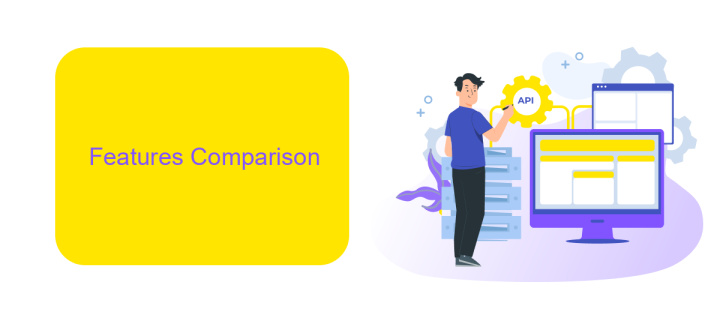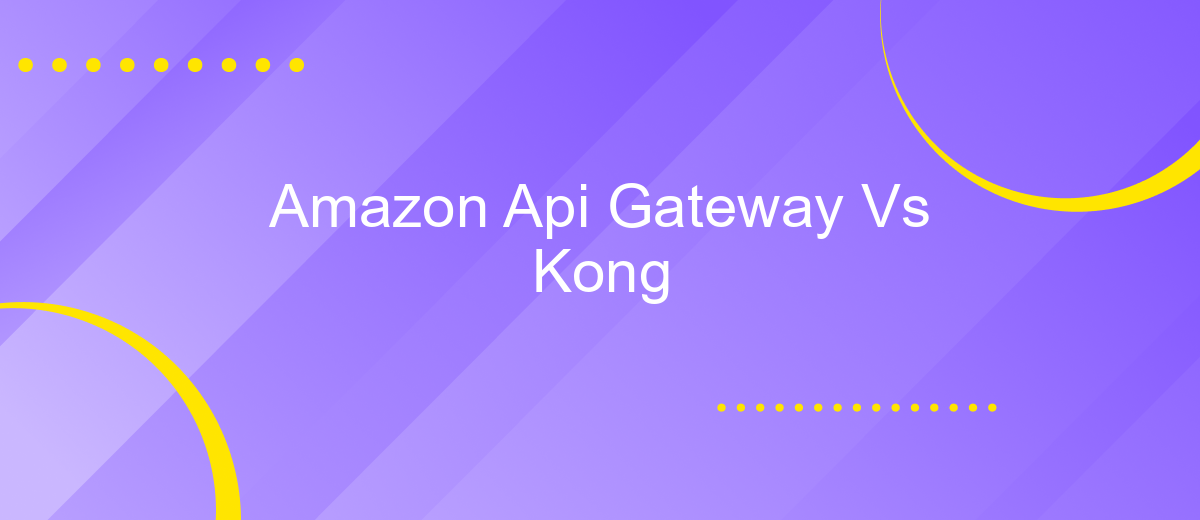Amazon Api Gateway Vs Kong
In the realm of API management, Amazon API Gateway and Kong stand out as two prominent solutions, each offering unique features and capabilities. This article delves into a comparative analysis of these two platforms, exploring their strengths, weaknesses, and ideal use cases. Whether you're a developer or an enterprise architect, understanding their differences can guide you in making an informed decision.
Introduction
In the rapidly evolving landscape of microservices and cloud-native applications, choosing the right API gateway is crucial for efficient and secure API management. Amazon API Gateway and Kong are two prominent solutions that offer robust features to help organizations streamline their API operations. Both platforms come with unique capabilities that cater to different business needs and technical requirements.
- Amazon API Gateway: A fully managed service that makes it easy for developers to create, publish, maintain, monitor, and secure APIs at any scale.
- Kong: An open-source API gateway and microservices management layer that provides high performance and scalability.
Understanding the distinctions between Amazon API Gateway and Kong can significantly impact your API strategy. For instance, leveraging a service like ApiX-Drive can further simplify the integration process, offering seamless connectivity between various APIs and applications. This comparison aims to provide a comprehensive overview to help you make an informed decision tailored to your specific needs.
Features Comparison

Amazon API Gateway and Kong offer robust solutions for managing APIs, but they cater to different needs. Amazon API Gateway is a fully managed service that allows developers to create, publish, maintain, monitor, and secure APIs at any scale. It integrates seamlessly with other AWS services, providing a comprehensive ecosystem for cloud-based applications. Kong, on the other hand, is an open-source API gateway and microservices management layer that offers flexibility and customization. It excels in hybrid and multi-cloud environments, making it a versatile choice for diverse deployment scenarios.
When it comes to integration capabilities, both platforms offer extensive support, but the approach differs. Amazon API Gateway simplifies integration with AWS Lambda, DynamoDB, and other AWS services, streamlining the development process within the AWS ecosystem. Kong provides a rich plugin architecture, enabling integrations with various third-party services and databases. For businesses looking to automate and streamline their API integrations, tools like ApiX-Drive can be invaluable. ApiX-Drive offers a user-friendly interface to connect various applications and services, enhancing the integration capabilities of both Amazon API Gateway and Kong.
Use Cases

When considering Amazon API Gateway versus Kong, it's essential to understand their specific use cases to determine which solution fits your needs better. Both platforms offer robust API management capabilities but are tailored for different scenarios.
- Microservices Architecture: Amazon API Gateway is ideal for serverless applications and microservices architecture, providing seamless integration with AWS Lambda and other AWS services.
- Enterprise-Level API Management: Kong excels in enterprise environments where high scalability, flexibility, and customization are required. It supports a wide range of plugins and integrations, making it suitable for complex API ecosystems.
- Third-Party Integrations: For businesses needing to integrate various third-party services quickly, tools like ApiX-Drive can complement either API Gateway or Kong by simplifying the integration process without extensive coding.
Ultimately, the choice between Amazon API Gateway and Kong depends on your specific use case, infrastructure, and scalability requirements. While Amazon API Gateway is a natural fit for AWS-centric applications, Kong offers broader flexibility and customization for diverse environments.
Pricing and Support

When comparing Amazon API Gateway and Kong, pricing and support are crucial factors to consider. Amazon API Gateway operates on a pay-as-you-go model, charging based on the number of API calls, data transfer, and caching. This can be cost-effective for smaller projects but may become expensive as the usage scales up. Kong, on the other hand, offers a range of pricing plans, including a free community edition, which can be appealing for startups and small businesses.
Support options also differ significantly between the two platforms. Amazon provides comprehensive support through AWS Support plans, which include 24/7 customer service, technical support, and access to a vast knowledge base. Kong offers support through its enterprise plans, which provide dedicated assistance, training, and a robust community forum.
- Amazon API Gateway: Pay-as-you-go pricing, extensive AWS support plans.
- Kong: Multiple pricing tiers, including a free edition, enterprise support options.
For businesses looking to integrate these API management solutions seamlessly, services like ApiX-Drive can be invaluable. ApiX-Drive simplifies the integration process, allowing for easy connection between various APIs and automating workflows, thus enhancing efficiency and reducing manual efforts.
Conclusion
In conclusion, both Amazon API Gateway and Kong offer robust solutions for managing APIs, each with its unique strengths and weaknesses. Amazon API Gateway is deeply integrated with AWS services, making it an excellent choice for organizations already utilizing the AWS ecosystem. Its seamless integration, scalability, and security features are hard to match. On the other hand, Kong provides a highly flexible and customizable platform that can be deployed across various environments, including on-premises, cloud, and hybrid setups. Its open-source nature and extensive plugin ecosystem offer unparalleled customization options.
Ultimately, the choice between Amazon API Gateway and Kong will depend on your specific requirements, existing infrastructure, and future scalability needs. For organizations looking to streamline their API integrations, services like ApiX-Drive can further simplify the process by automating data transfers and synchronizations across various platforms. By carefully evaluating your needs and leveraging the right tools, you can ensure a more efficient and effective API management strategy.


FAQ
What are the primary differences between Amazon API Gateway and Kong?
Which one is more cost-effective: Amazon API Gateway or Kong?
Can both Amazon API Gateway and Kong handle high traffic volumes?
How easy is it to integrate Amazon API Gateway and Kong with other services?
What tools can I use to automate and configure integrations for Amazon API Gateway and Kong?
Do you want to achieve your goals in business, career and life faster and better? Do it with ApiX-Drive – a tool that will remove a significant part of the routine from workflows and free up additional time to achieve your goals. Test the capabilities of Apix-Drive for free – see for yourself the effectiveness of the tool.

